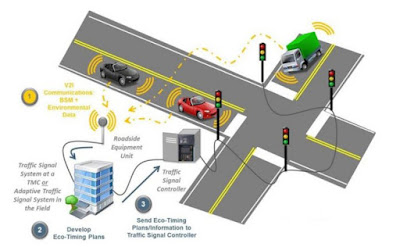In an era where road safety is of paramount importance, governments and law enforcement agencies are turning to advanced technologies to improve traffic management and reduce accidents. One such technology that has gained significant attention is photo enforcement. This article explores the concept of photo enforcement, its benefits, and its impact on road safety.
What is Photo Enforcement?
Photo enforcement is a system that utilizes cameras and sensors to automatically detect and record traffic violations, such as speeding, red light running, and illegal parking. These violations are captured as images or videos, providing authorities with irrefutable evidence to enforce traffic laws. With the ability to operate 24/7, photo enforcement acts as an extra set of eyes on the road, ensuring compliance even in the absence of physical law enforcement personnel.
Benefits of Photo Enforcement:
Improved Road Safety: Photo enforcement acts as a powerful deterrent against traffic violations, significantly reducing the number of accidents caused by speeding, running red lights, or other illegal maneuvers. When drivers know that their actions are being monitored and violations will be recorded, they tend to be more cautious and adhere to traffic regulations.
Efficient Traffic Management: By automating the process of identifying traffic violators, photo enforcement systems free up valuable law enforcement resources that can be allocated to other critical areas. This leads to better traffic management, reduced congestion, and more effective use of personnel in addressing other safety concerns.
Cost-Effectiveness: While the initial setup of a photo enforcement system may involve some investment, it can be cost-effective in the long run. The automated nature of the technology eliminates the need for additional manpower, reducing labor costs associated with traffic enforcement. Additionally, the fines collected from violations can be used to fund road safety initiatives and infrastructure improvements.
Objective and Accurate Enforcement: Photo enforcement eliminates subjective judgments that can arise when human officers enforce traffic laws. The systems are designed to capture violations with precision, leaving no room for error or bias. This ensures fair and consistent enforcement across all drivers, irrespective of their background or social status.
Public Awareness and Education: Photo enforcement also plays a significant role in raising public awareness about road safety. By highlighting the consequences of traffic violations through publicized enforcement efforts, communities become more educated about the importance of following traffic laws, leading to a cultural shift towards responsible driving habits.
Critiques and Considerations:
While photo enforcement offers numerous benefits, it is important to address concerns raised by critics. Some argue that the technology may compromise privacy by capturing images of vehicles and their occupants. However, the systems are specifically designed to focus on the vehicle and license plate, ensuring the privacy of individuals inside. Strict data protection and storage protocols are also implemented to safeguard personal information.
Additionally, opponents argue that photo enforcement systems prioritize revenue generation over safety. To counter such perceptions, it is essential for authorities to maintain transparency and communicate the primary objective of the technology: to enhance road safety and protect lives. Regular audits, public consultations, and community engagement initiatives can help build trust and alleviate concerns.
Conclusion:
Photo enforcement technology has emerged as a valuable tool in enhancing road safety. By leveraging cameras and sensors to automatically detect traffic violations, it promotes responsible driving behavior and reduces the number of accidents caused by speeding and other illegal maneuvers. While addressing concerns and ensuring privacy safeguards, governments and law enforcement agencies should embrace the potential of photo enforcement as a part of their comprehensive road safety strategies. Through effective implementation and public awareness campaigns, we can work towards creating safer roads for all.











